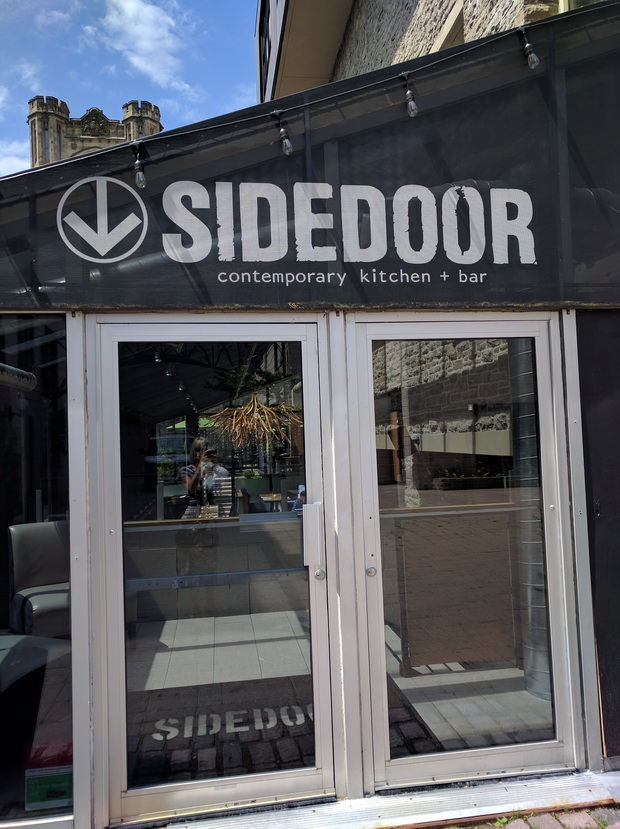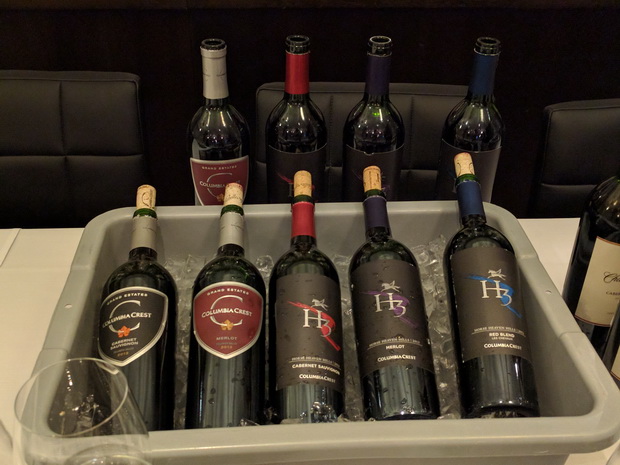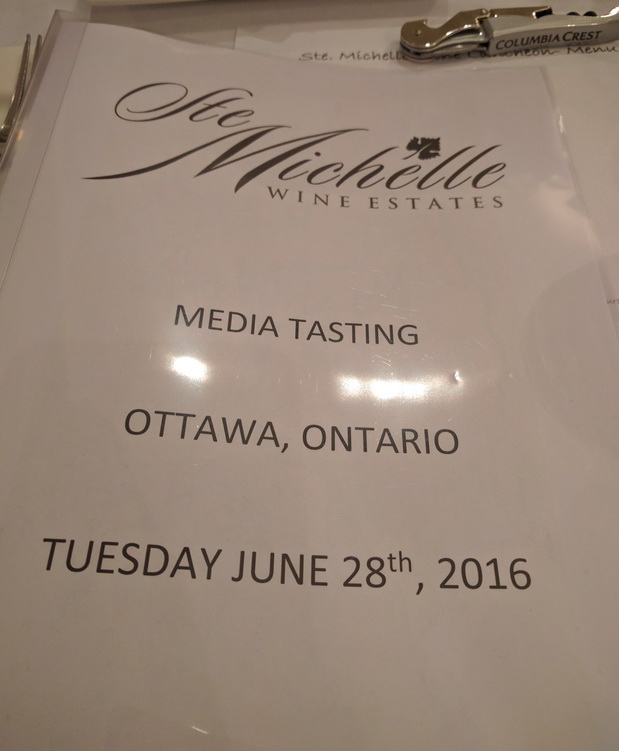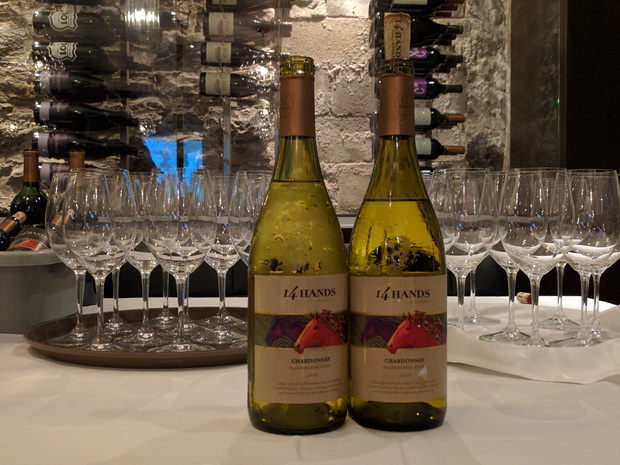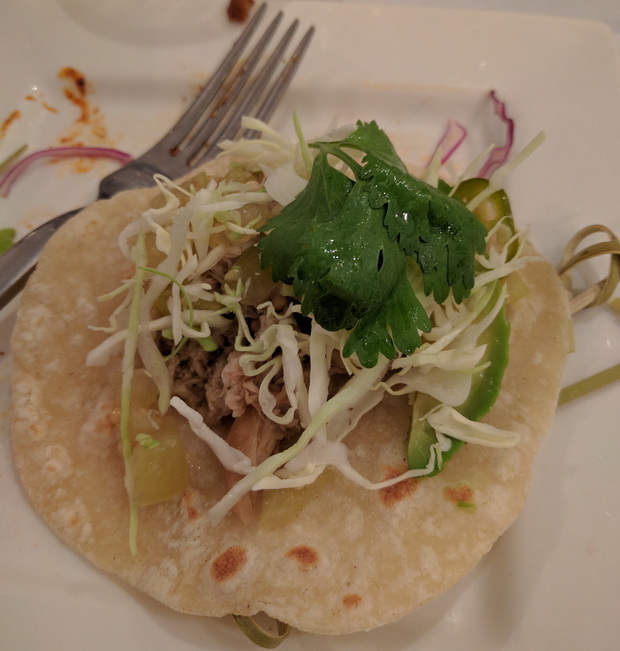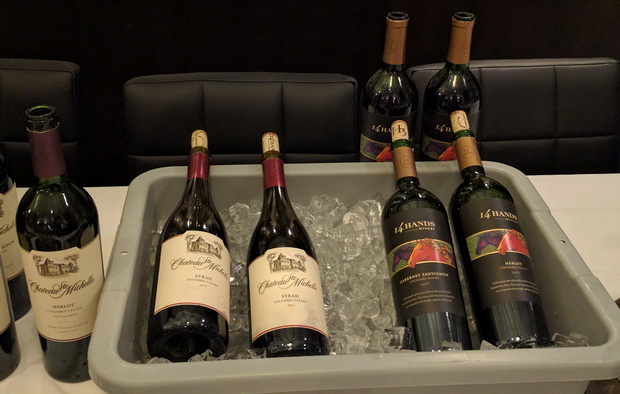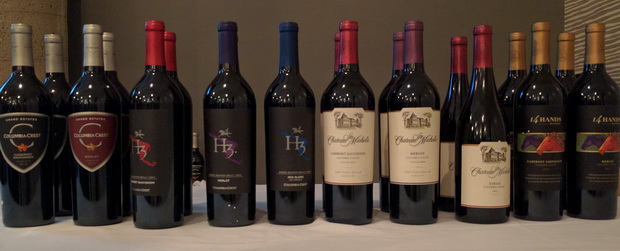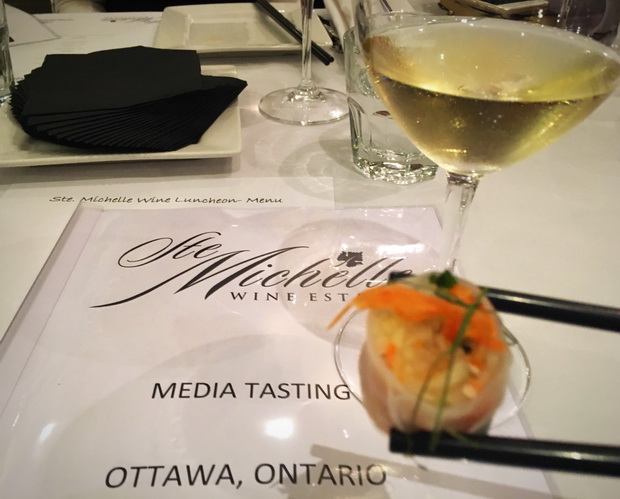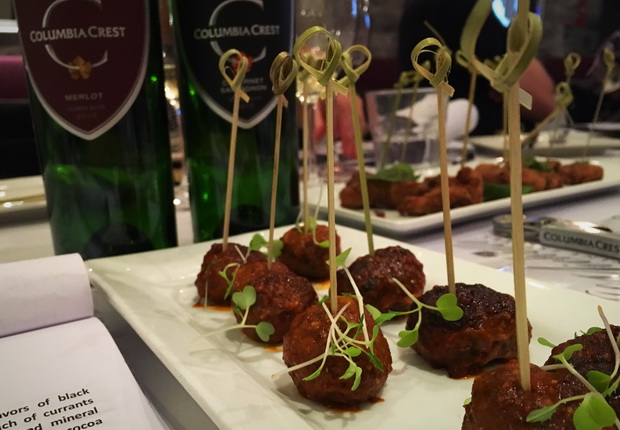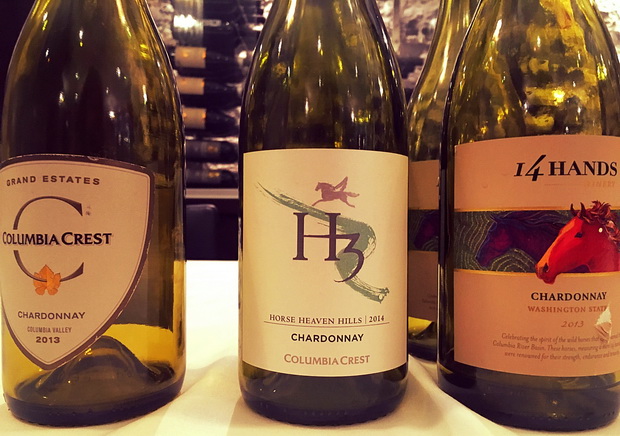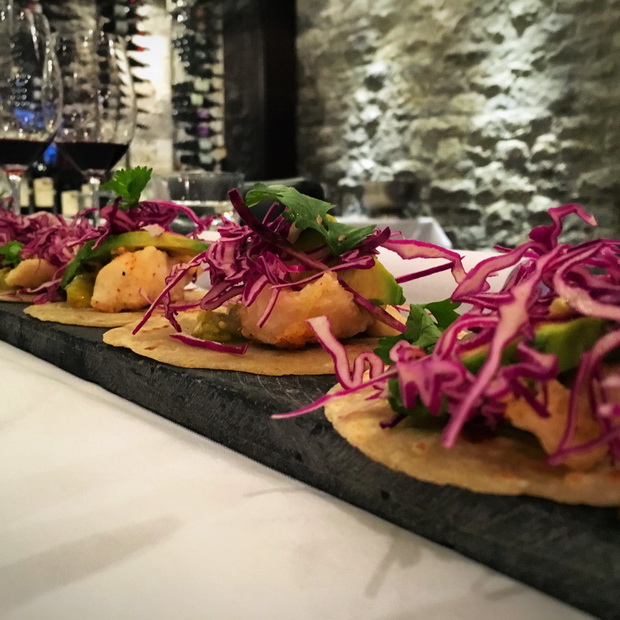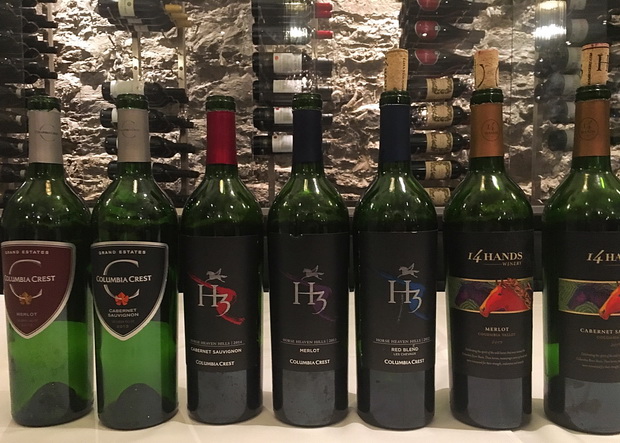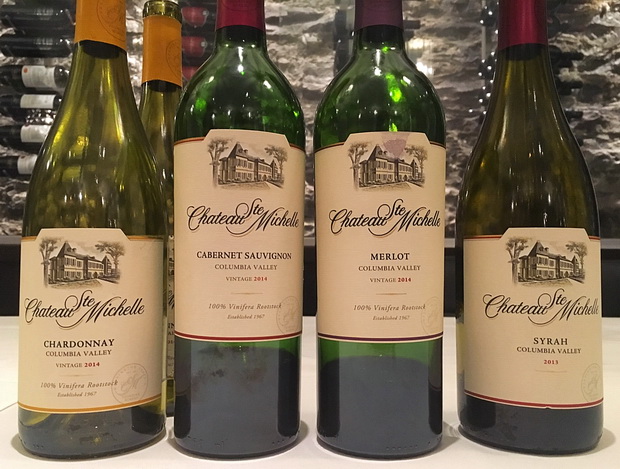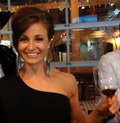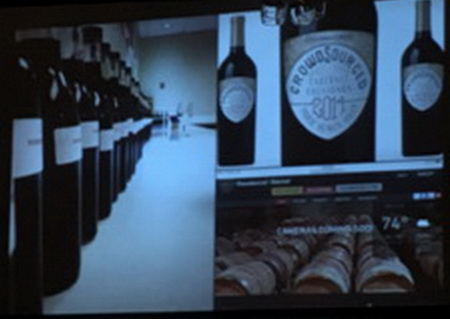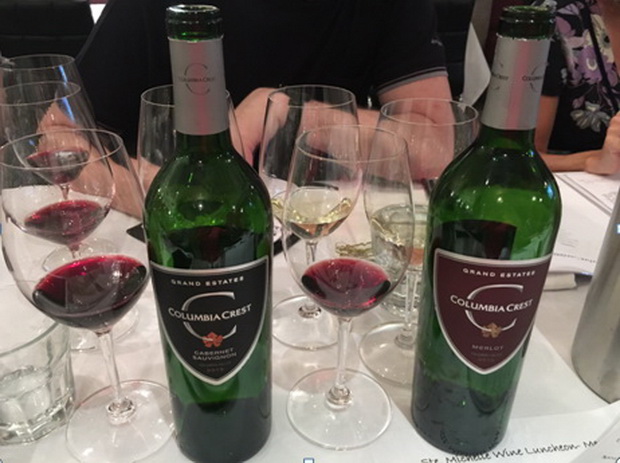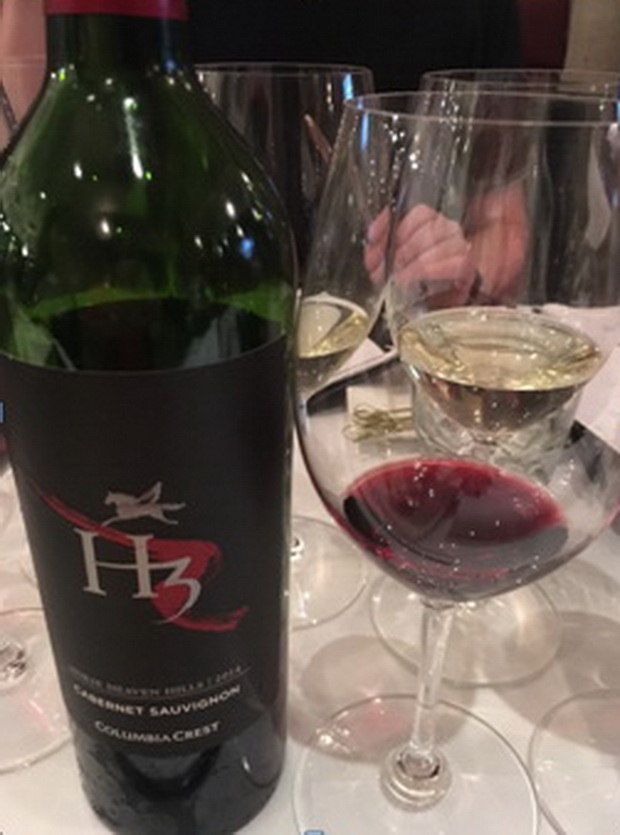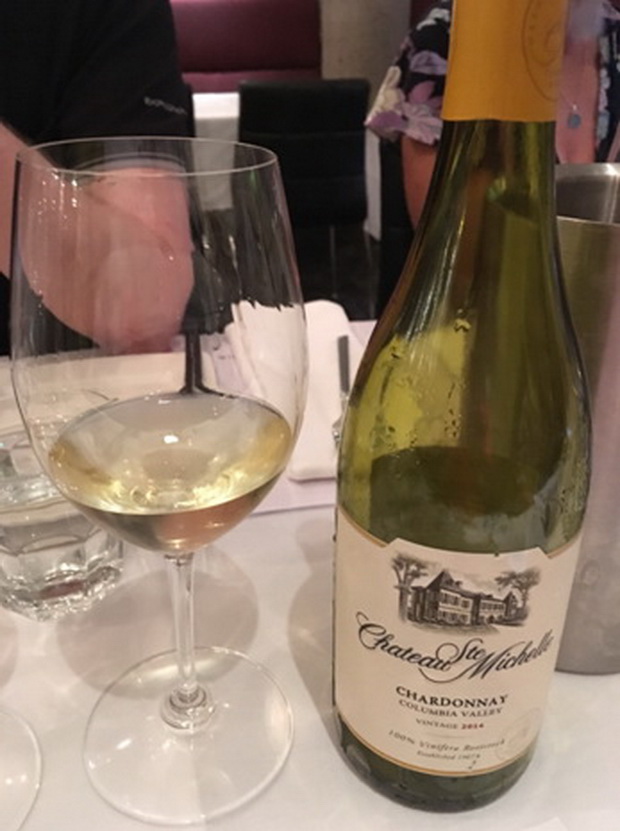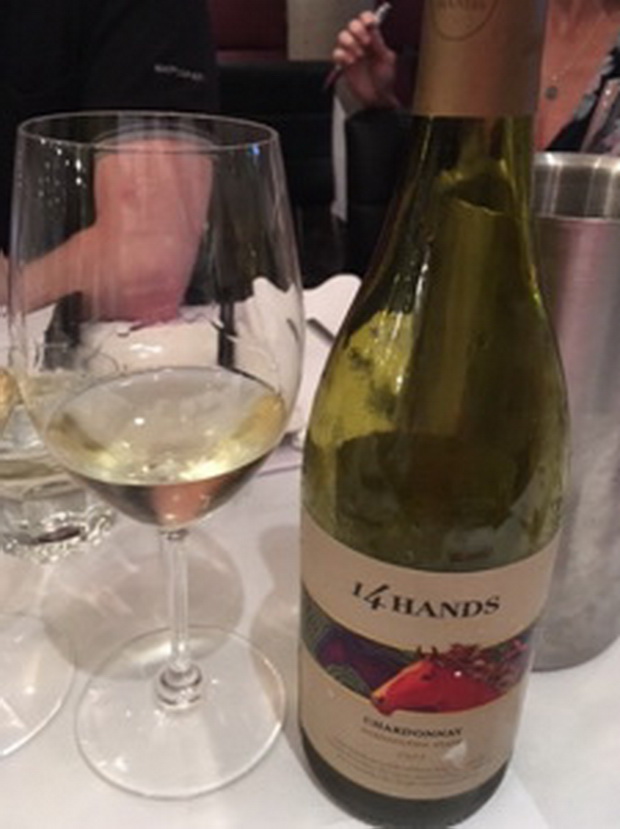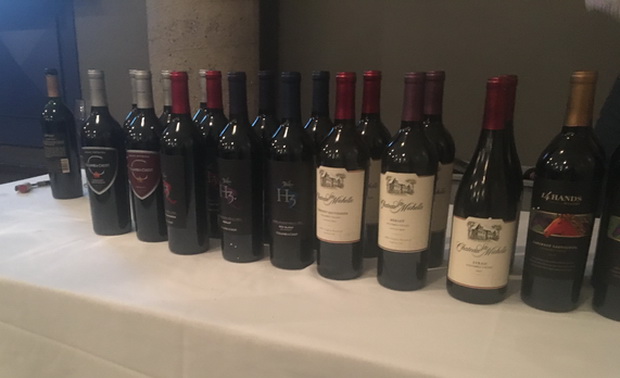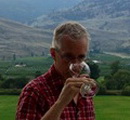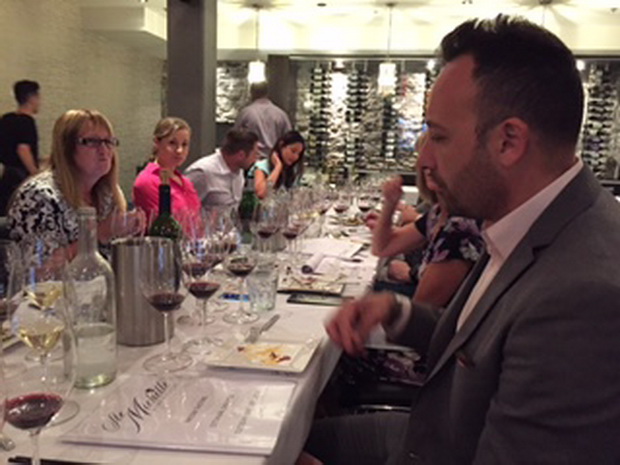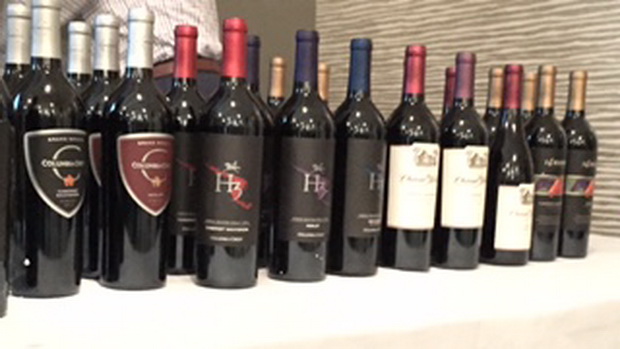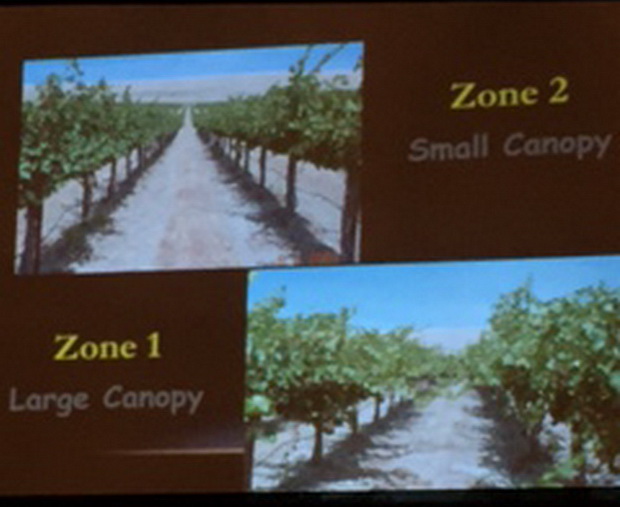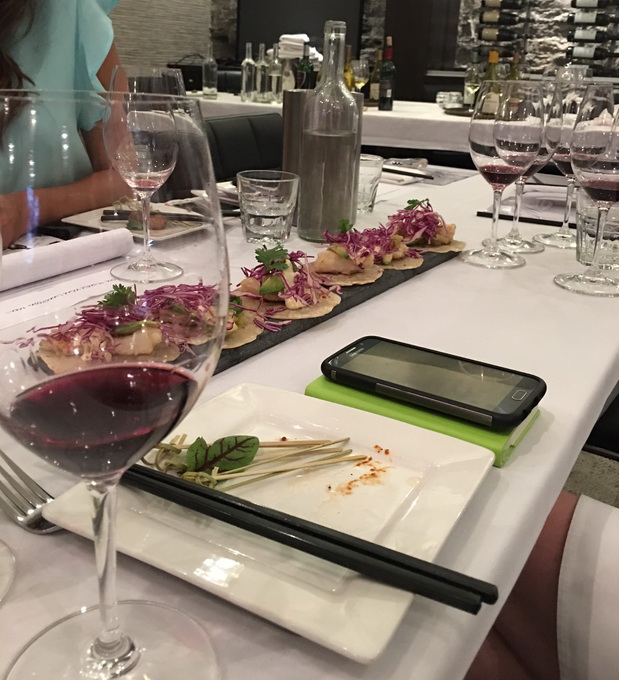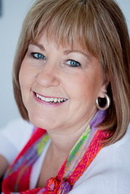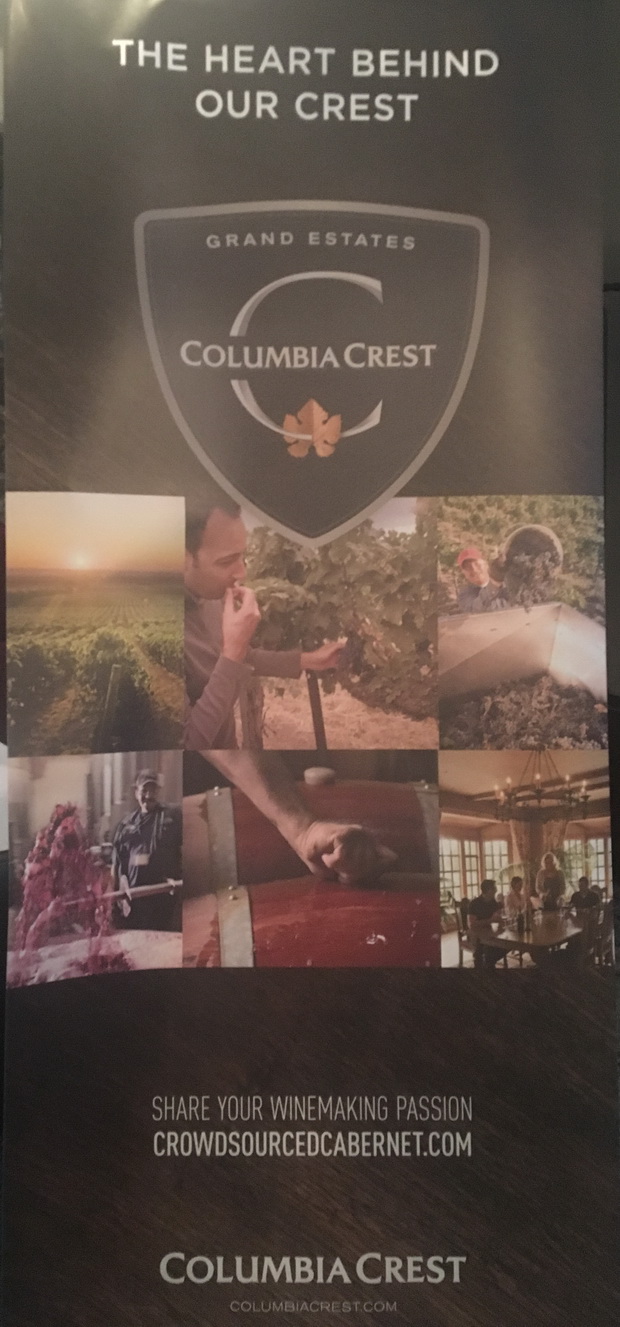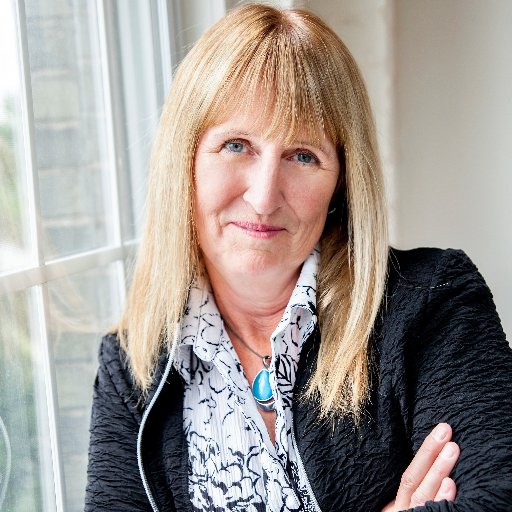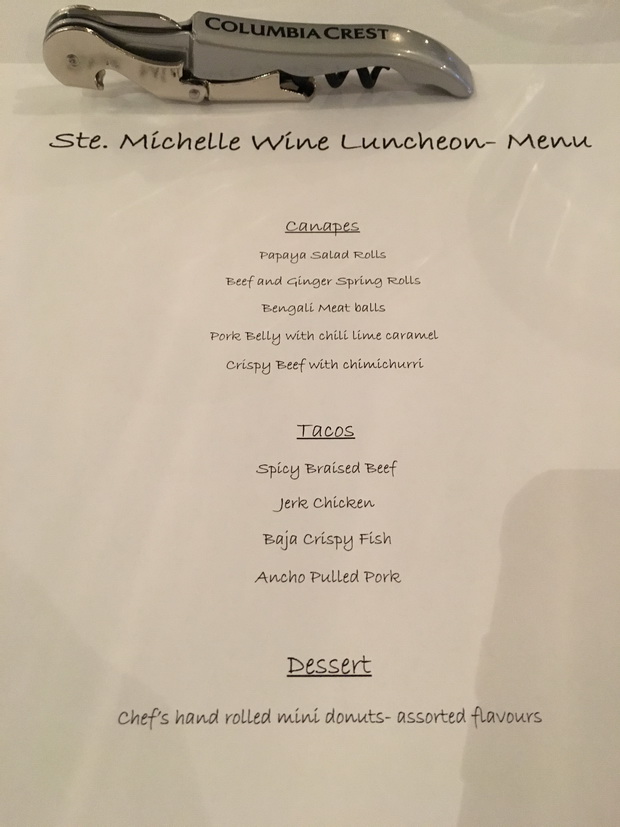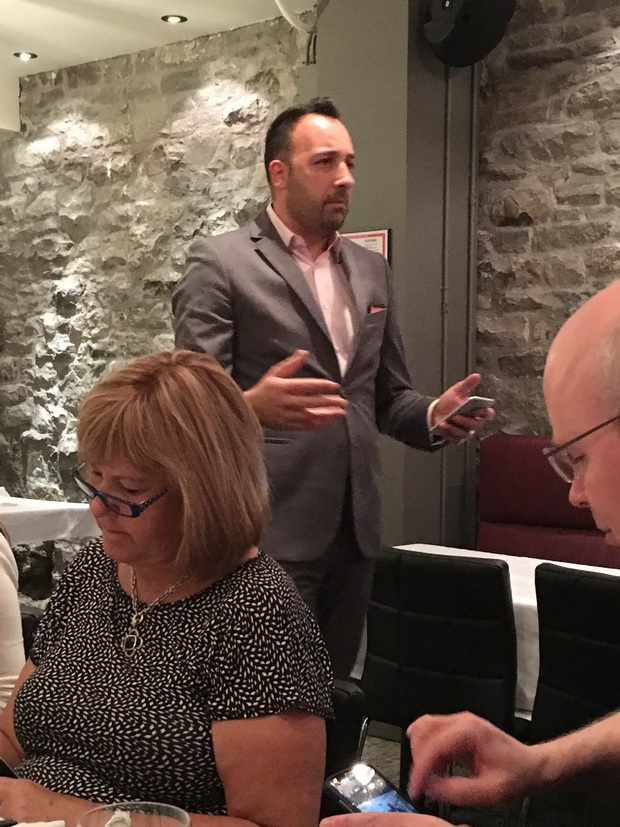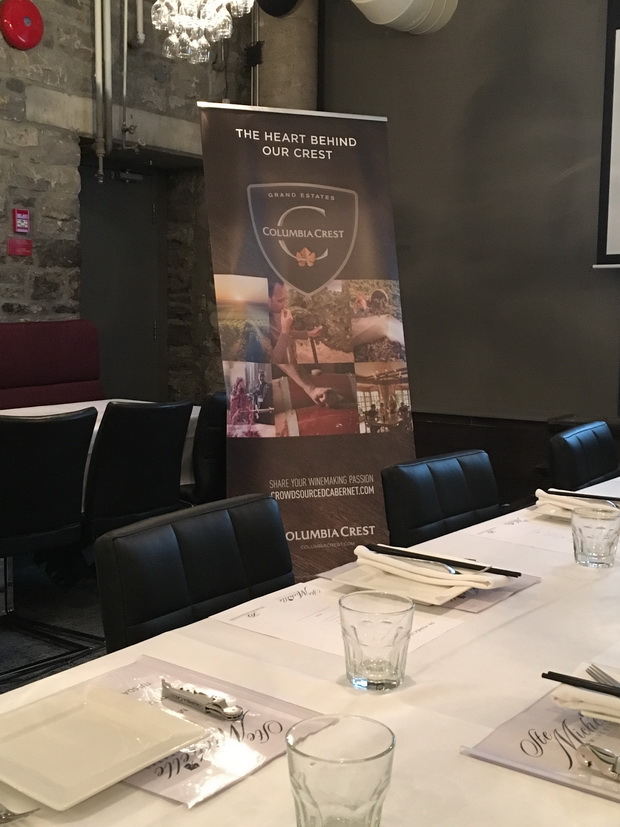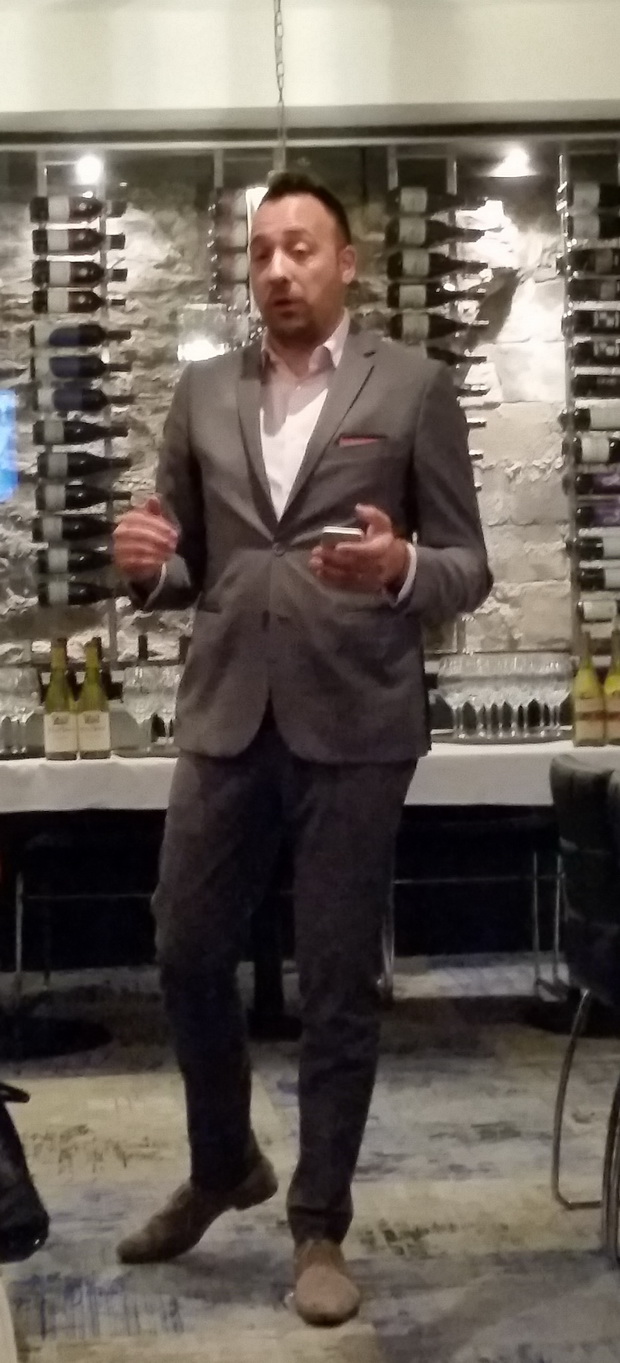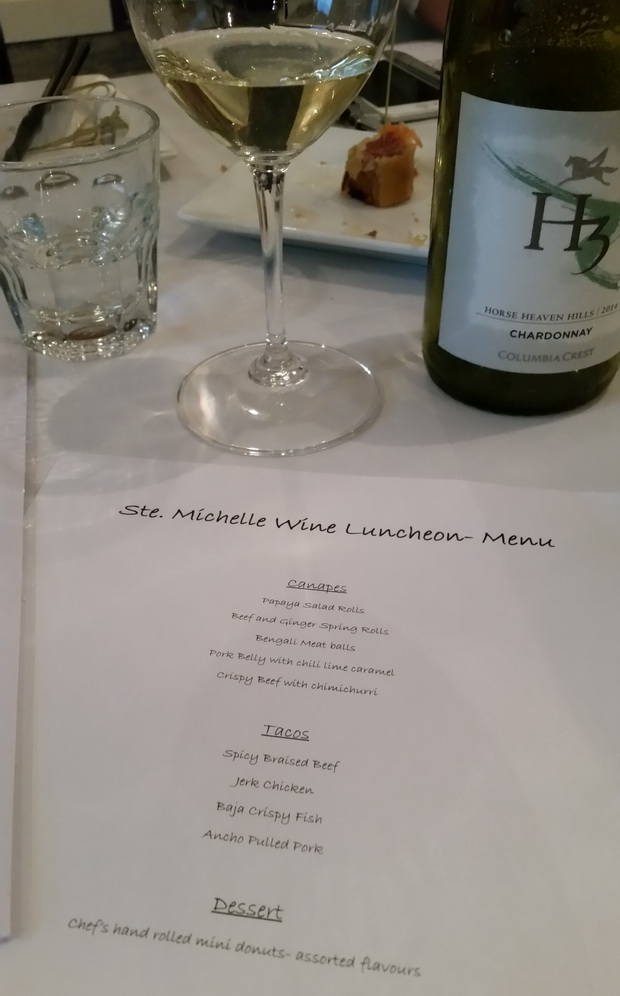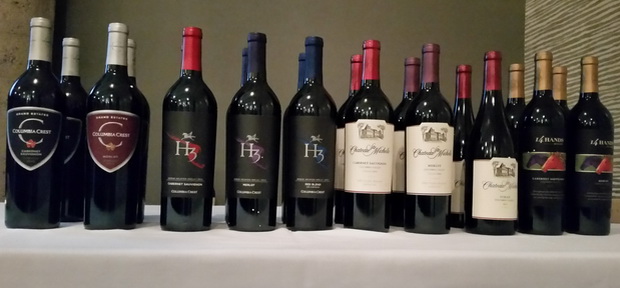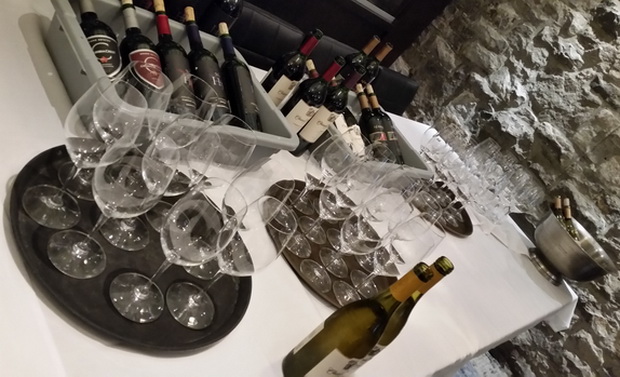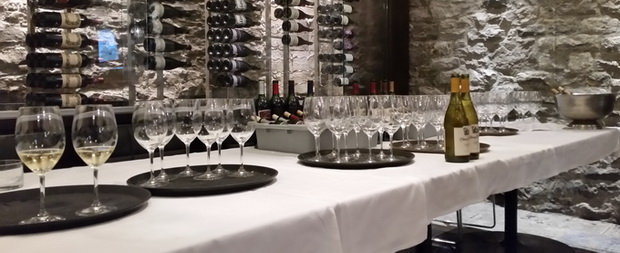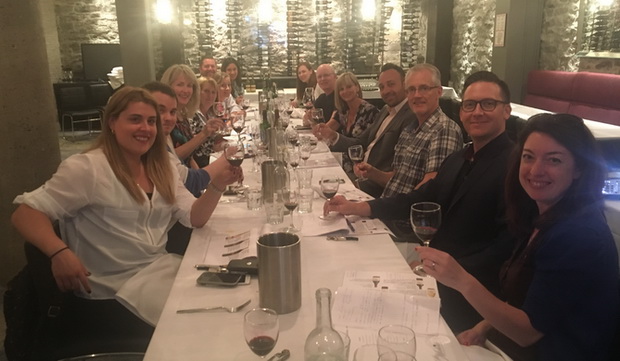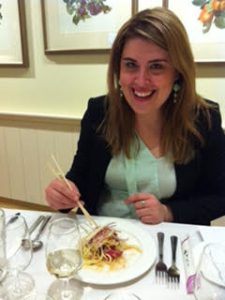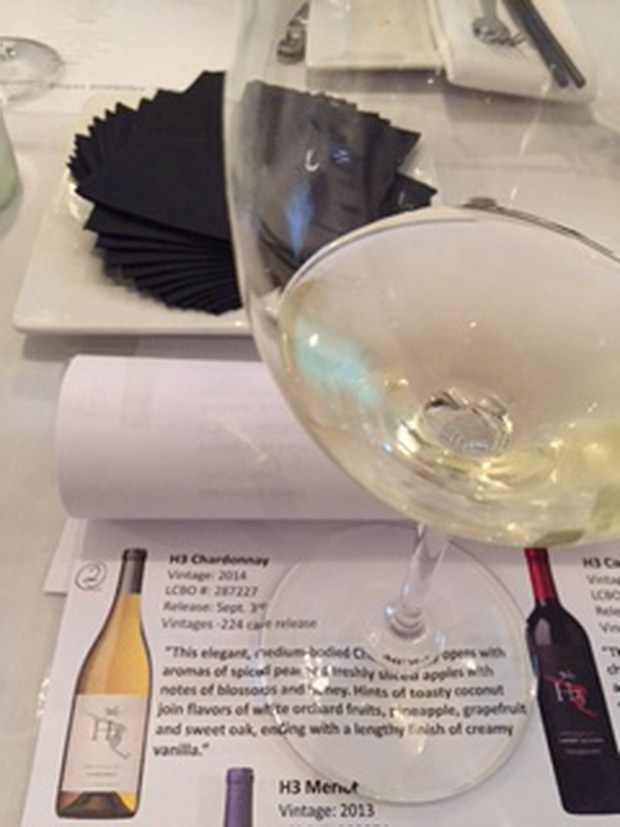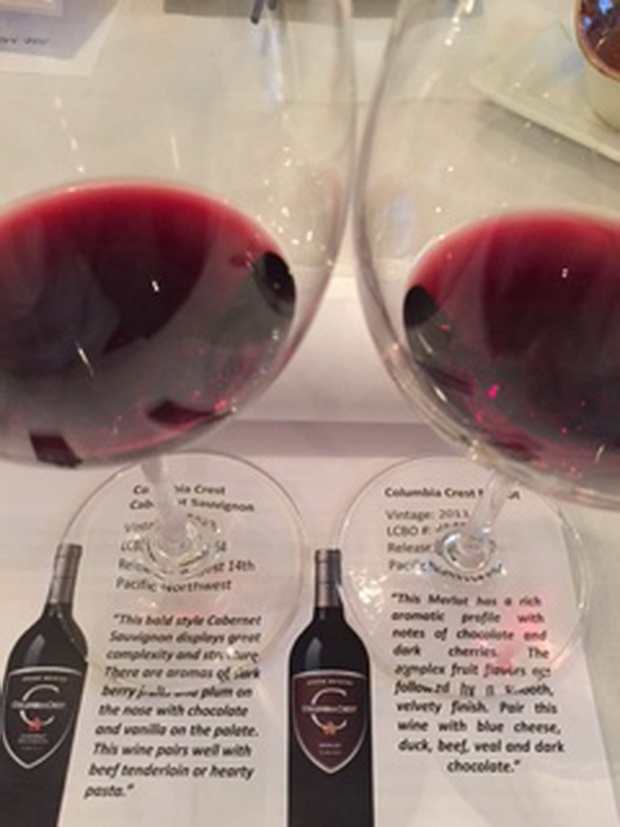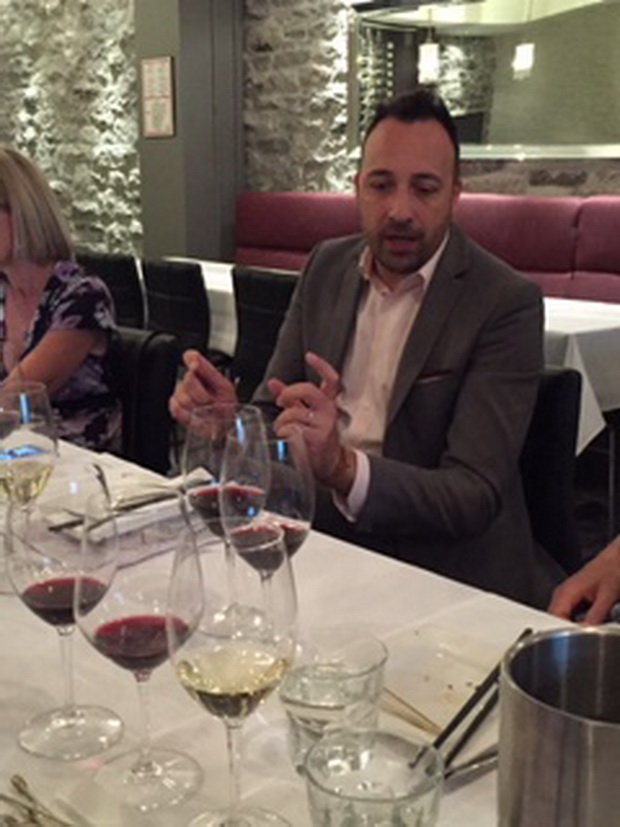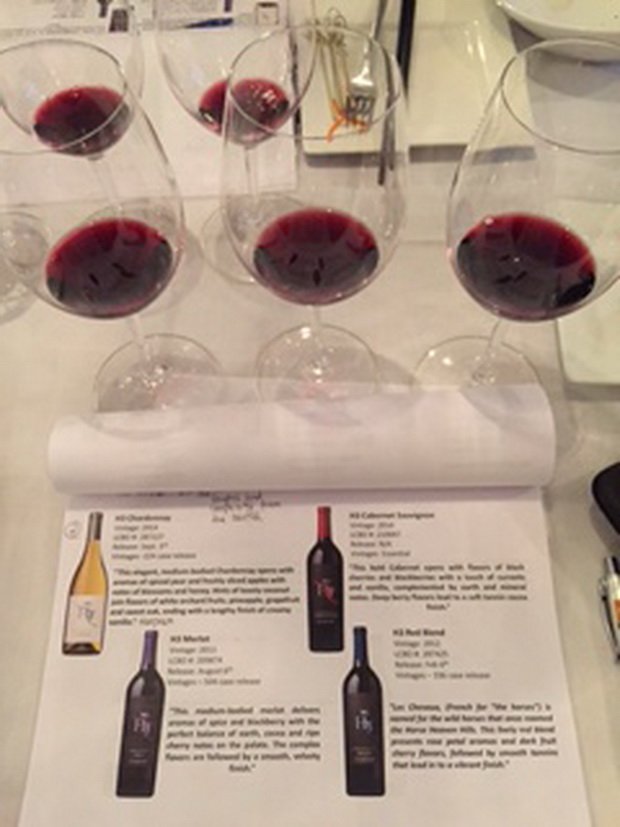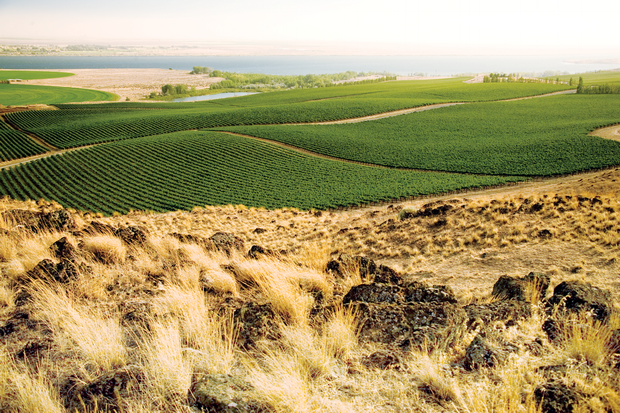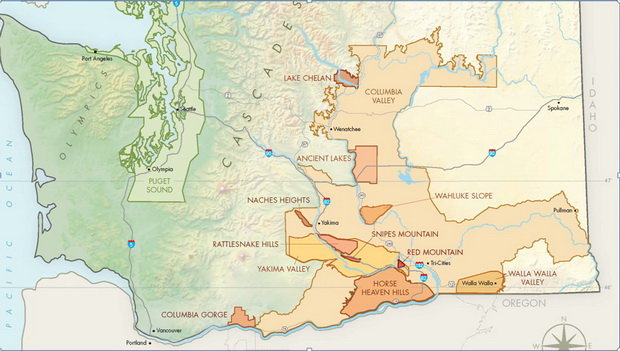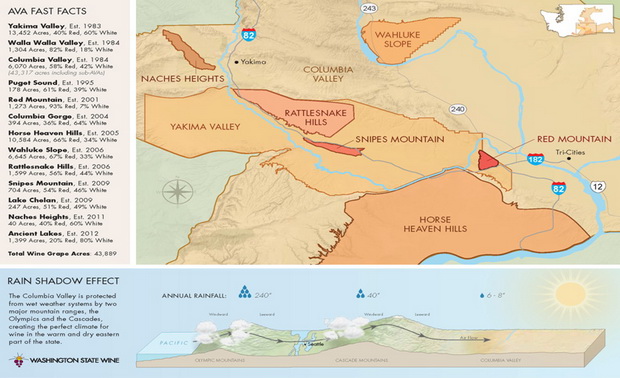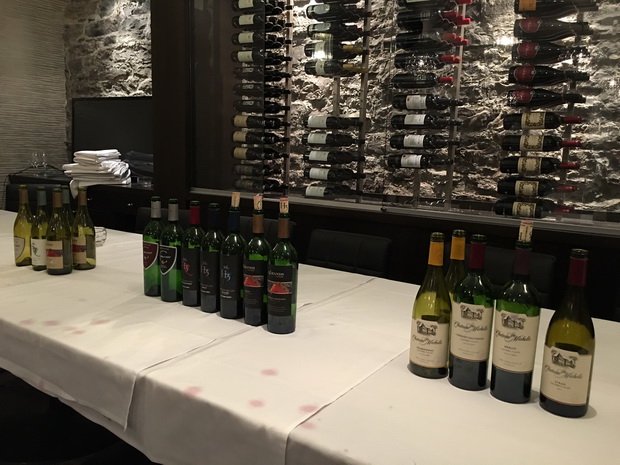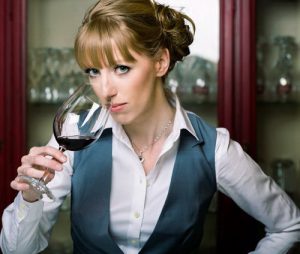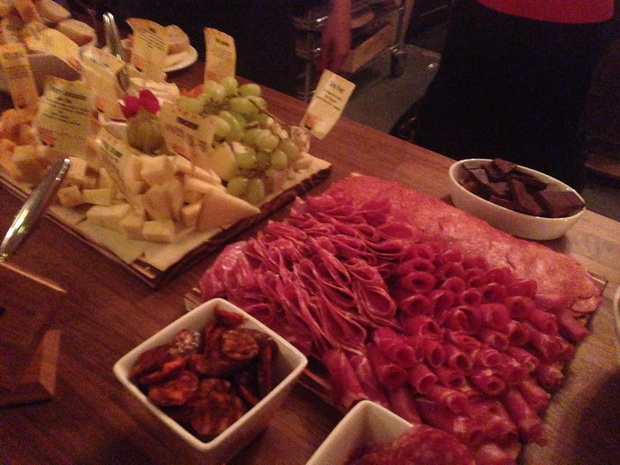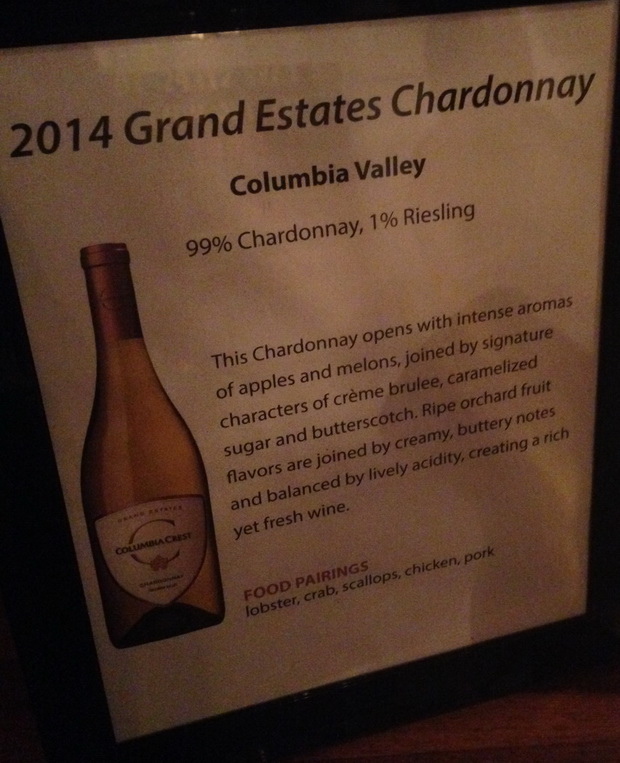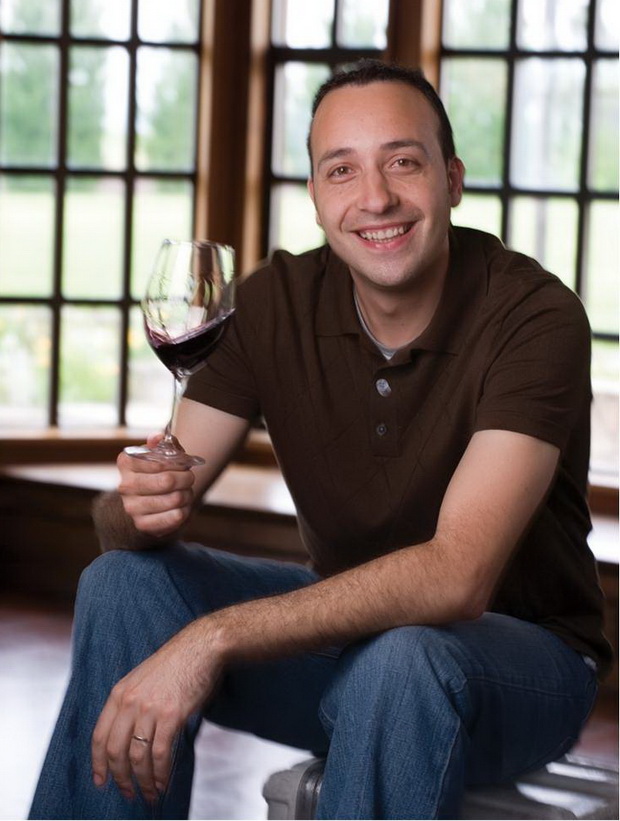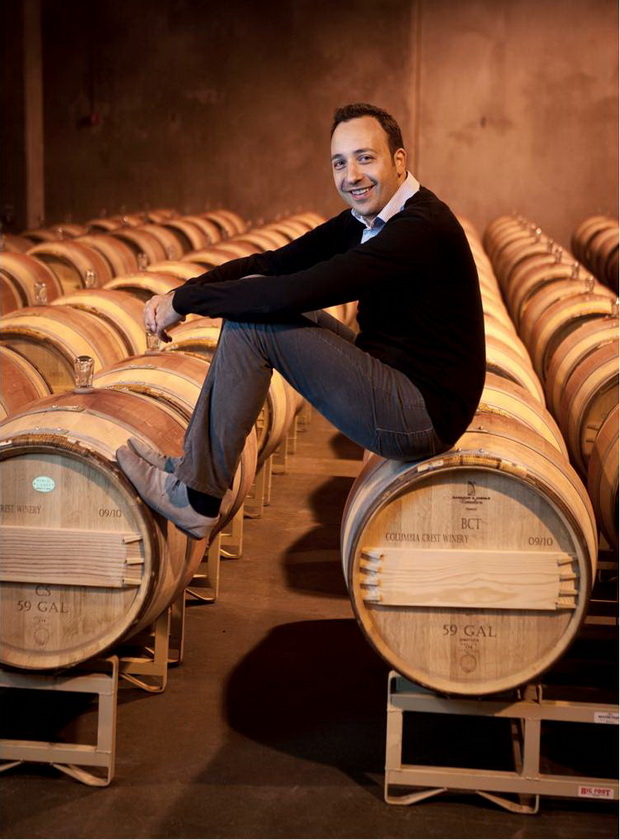Recently, Canada’s top wine writers and sommeliers gathered in the nation’s capital for a spectacular tasting of Washington State wines led by head winemaker at Columbia Crest Winery, Juan Munoz Oca.
This also included wines from Chateau St. Michelle, H3 and Two Hands, which are part of the winery’s portfolio.
Here are their surprising insights and insider tips on discovering Washington state wines.
Heather Wall
Wine Columnist, Huffington Post Canada
Juan weaves a familiar story of most winemakers I have had the pleasure of meeting. Wine is in his blood and prior generations have taught him a love and respect for wine that we can only sip and write about.
Juan Munoz Oca came to the Pacific Northwest via Argentina. Juan was born in Spain but his family moved to Mendoza, Argentina where his grandfather was the cellar master at Bodegas Toso winery.
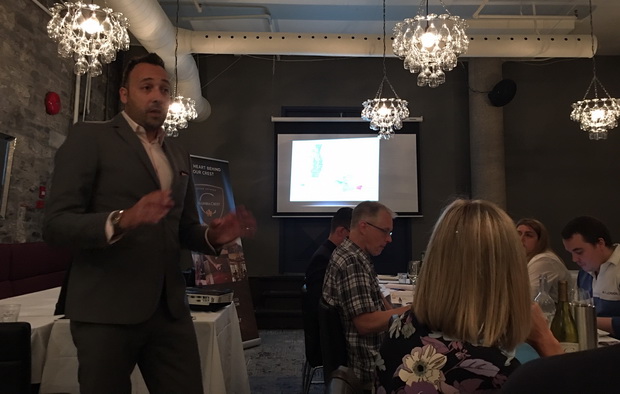
He picked his first grape at the tender age of eight and as he grew older he took an after-school job in the wine cellar and partaking in the harvest each year. He has honed his winemaking skills in five countries on four continents which brought him to Paterson, Washington since 2003.
In 2011, he was named head winemaker at Columbia Crest and responsible for the winery’s portfolio of Reserve, H3 and Grand Estates wines.
Juan prefaced our lunch stating “It will feel like I’m bragging at times about Washington. I am. It’s a great place to grow grapes.” Indeed it would seem to be an utopia for growing grapes and making wine.
Four hours west of Seattle over the Cascade Mountains you will find Paterson, Washington – the second driest city in the Continental US. Seventeen hours of sunlight in the summer; loose sand-like soils, rainfall coming during winter months, distressed vines in search of water.
Virus and disease don’t like the cold winters or loose soils and therefore vines are certified 100% Vinifera rootstock as stated on the label – especially the Cabernet Sauvignon.
Columbia Crest has two wines coming to the LCBO General list. Columbia Crest Merlot 2013 at $17.95 hit the shelves June 3rd. Lovely medium-bodied red with sweetness and silky tannins and layers of dark fruit, chocolate and fresh acidity. A wine with Old World flare. “Not wimpy,” according to Juan.
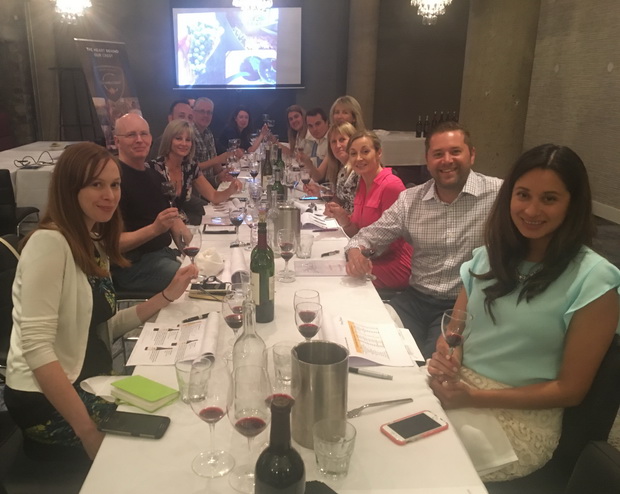
On August 14th Columbia Crest Cabernet Sauvignon will hit the shelves. Loved the lingering coffee bean nose on the glass. Lots of dark fruit, chocolate, medium(+) acidity and round tannins. Perfect beef wine. I loved it with the Spicy Braised Beef taco prepared by Sidedoor Contemporary Kitchen. They always do such and amazing job for us tasters.
H3 Chardonnay 2014 $20.95 will be coming to Vintages September 3rd , 2016. This is an elegant, medium-bodied Chardonnay that was 1/3 fermented in stainless steel. Hints of warm tropical fruit and honey are washed with bright acidity and lingering creamy vanilla coconut finish. Loved it!
Chateau Ste. Michelle Columbia Valley Cabernet Sauvignon 2014 was released in Vintages June 25th, 2016. Silky smooth concentration with gobs of red and black fruit, chocolate, and warm spices. All this complexity for just $20.95. This is a buy two wine.
Just in time for Christmas 2016 will be the 14 Hands Chardonnay 2014 at just $18.95. A little lighter in style with fresh citrus and baked pears leading the team. Bright acidity and lingering caramel finish made this one of my favourites of the luncheon. I love Chardonnay!!
Thoroughly enjoyed my time with Juan and his wines. I’d like to thank him for his time and the Dandurand wine agency for arranging this stop in Ottawa and the array of wines on offer over the lunch.
Jennifer MacDonald Havers
Wine Columnist, Ottawa Citizen
Any wine tasting or wine dinner I’ve attended usually becomes a larger discussion about much more than wine, which is partly why I find them so fascinating.
In the case of our lunch tasting with Chateau St. Michelle and Columbia Crest winemaker, Juan Munoz Oca, our tasting combined a wonderful introduction to the Columbia Crest, Chateau St. Michelle, H3, and Two Hands brands with a lesson in geography and Washington State in general.
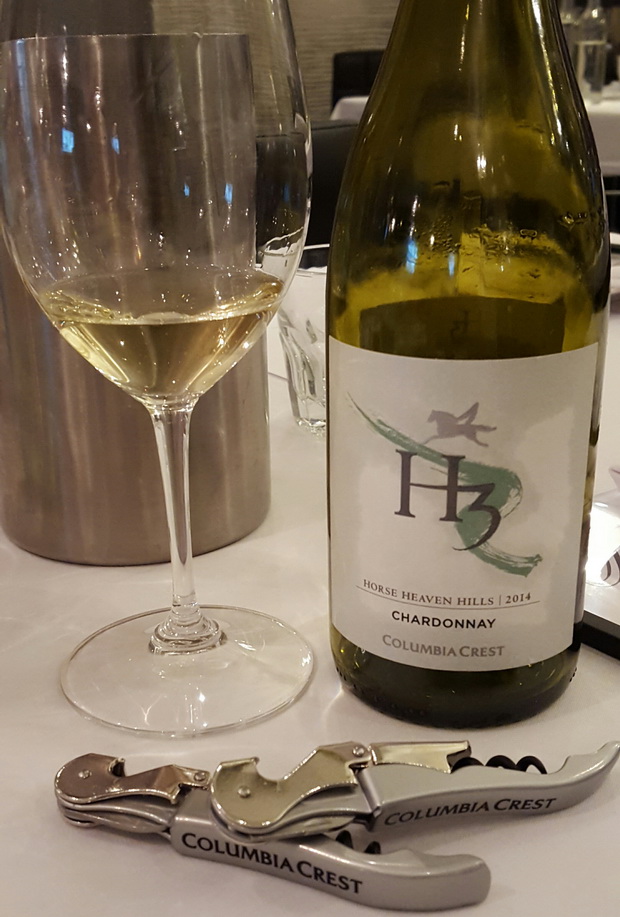 Photo by Jennifer MacDonald Havers
Photo by Jennifer MacDonald Havers
Even many wine enthusiasts might be short on information regarding Washington State wine. In Ontario, we see only a few examples of their wines, but that is changing helped by the efforts of these brands.
While trying several of these wines, we were informed additional wines would be joining the LCBO general list, and several others would be heading to Vintages in the near future. Knowing we can recommend these wines so people will be able to buy them is a huge win!
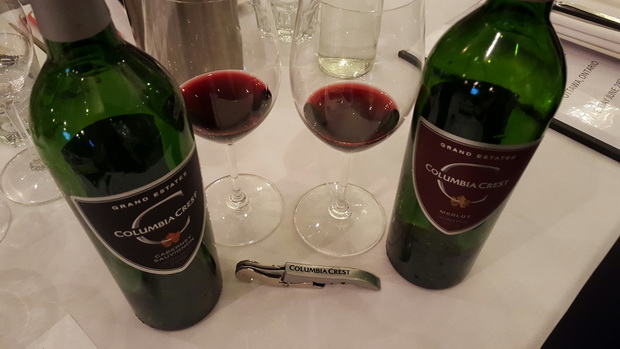 Photo by Jennifer MacDonald Havers
Photo by Jennifer MacDonald Havers
I was surprised to learn how dry it is in the Columbia Valley, where much of Washington’s vineyards are located. Considering Seattle is such a rainy city with over 250 inches of rainfall annually, it’s surprising that Columbia Valley sees only around 6-8 inches (150 mm) of rainfall just 4 hours to the east.
Also, much of that rain falls in the winter, making Columbia Valley an ideal place to experiment with irrigation systems, and concepts like deficit irrigation, which is what our winemaker specializes in, and studied.
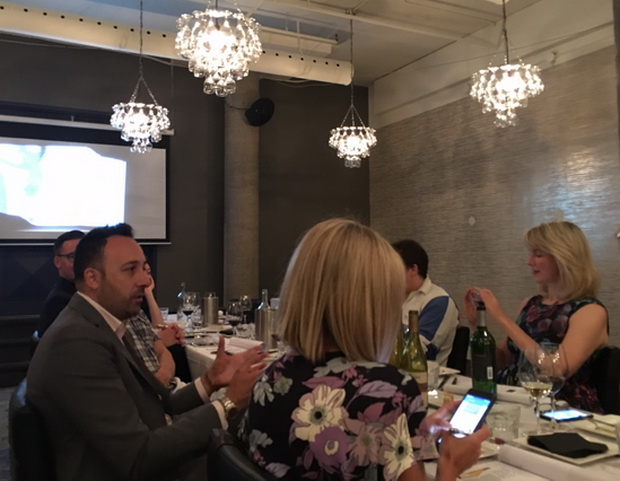
Vines are stressed and given some, but not all of, the water they might need to thrive, therefore, they focus their efforts on the fruit being produced, instead of the leaves or other parts of the plant. The result is concentrated fruit fantastic for winemaking.
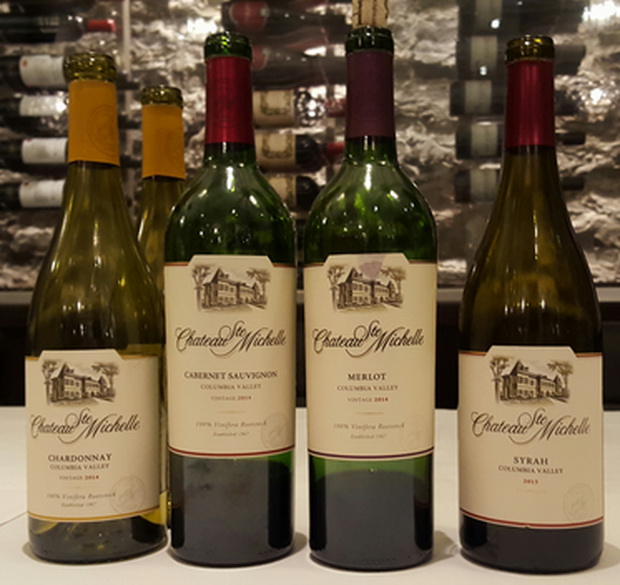 Photo by Jennifer MacDonald Havers
Photo by Jennifer MacDonald Havers
Also quite interesting is how the climate affects the ripening of the grapes. The Valley sees a hot summer in July, August, and September, with a number of high degree days, however, the temperatures in October are comparatively much lower.
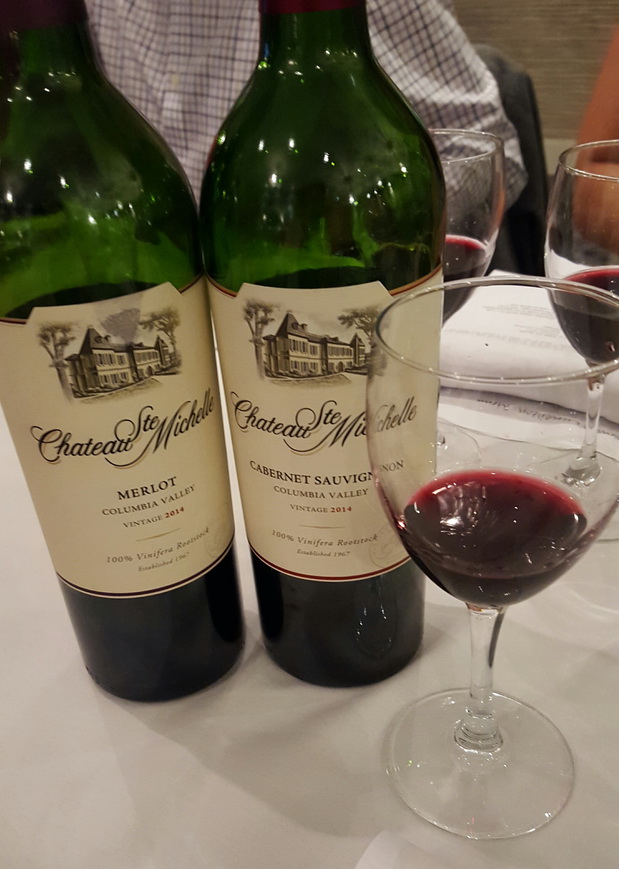 Photo by Jennifer MacDonald Havers
Photo by Jennifer MacDonald Havers
This results in grapes that ripen on the vines without adding a lot of overly high sugars in those final weeks, as can occur in warmer growing regions. The resulting product has a ripeness and fullness in flavour without overly high alcohol.
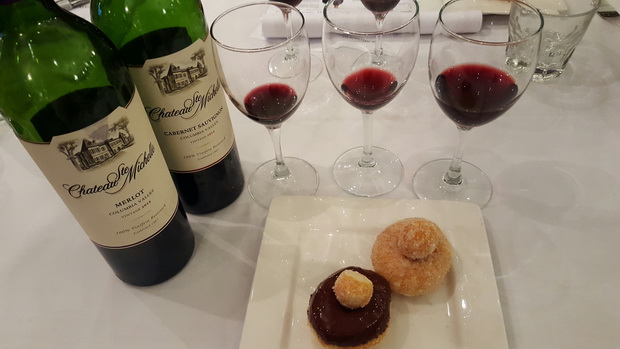 Photo by Jennifer MacDonald Havers
Photo by Jennifer MacDonald Havers
These great growing scenarios also help these brands deliver great value – the wines we tried today were all very well priced and show a wide variety of how Chardonnay, Merlot and Cabernet Sauvignon are reflected from this area. It was also fun to get a sneak peek of several wines that will soon be available to us here in Ontario.
Matt Steeves
Wine Expert, CTV Morning Live
Recently on a beautiful summer afternoon, a group of wine writers and sommeliers gathered at Sidedoor Kitchen in Ottawa’s Byward Market (in Ottawa, Ontario) to enjoy a structured tasting of Washington State wines led by head winemaker at Columbia Crest Winery, Mr. Juan Munoz Oca.
Born in Spain, raised in Argentina, from a very young age Juan has been involved in winemaking, having shadowed his grandfather who was the cellar master at Bodega Toso winery.
With degrees in agricultural engineering, winemaking, and advanced international studies in viticulture, as well as years of experience working on different continents producing top notch wines, Juan has led a storied career thus far and he’s positioned to do some incredible things in the future, especially in the impressive state of Washington where the stars have aligned to produce high quality, award winning wines, that you can afford!
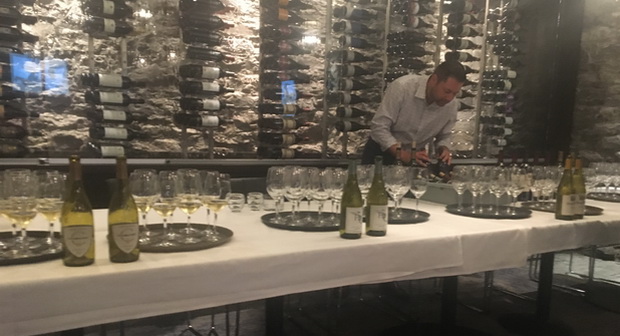
Juan has been producing wines in Washington state for ~15 years and relatively early on in that tenure, he captured international acclaim with one of their wines (Columbia Crest’s 2005 Reserve Cabernet Sauvignon) being awarded Wine of the Year by Wine Spectator.
A significant award for this wine region that continues to accumulate international awards and a large distribution network which perhaps is the biggest sign of success – when international markets can’t get enough of your delicious wines!
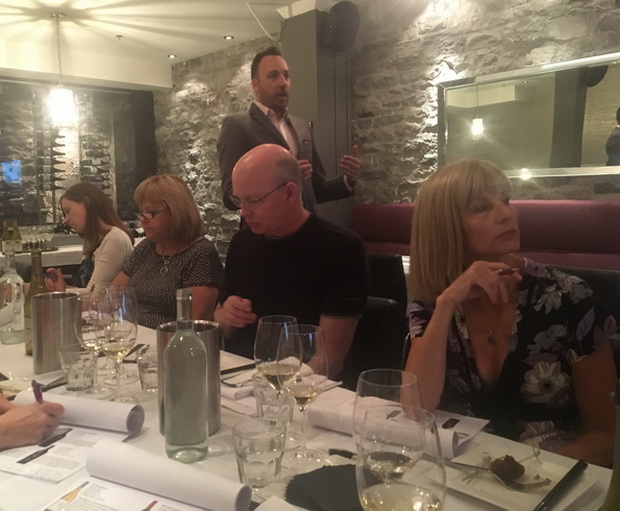
Juan walked the group through the benefits of Washington State’s unique climate and terroir and how it’s ideally suited for the production of high quality wines with great sense of place.
The benefits of an arid wine region are vast, well when you have access to water for irrigation that is.
The rain shadow effect that protects the Columbia Valley from the heavy rainfalls that Seattle ‘enjoys’ (Columbia Valley only gets a sprinkle in comparison to the west coast), means that winemakers control how much water their vines get, and when, which enables them to guide and control the quality of fruit they want for their specific wine program.
That one element is significant and allows the winemakers and viticulturists to embrace leading edge technologies to produce the finest and most complex fruit they can, and the proof is in the bottle.
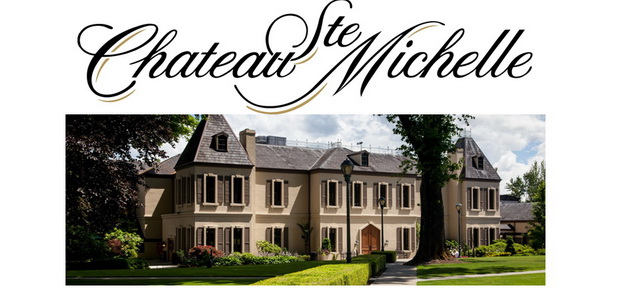
One of the major highlights from this tasting of Columbia Crest, Horse Heaven Hills (H3), Chateau Ste. Michelle, and 14 Hands, is that each of those wineries produce high quality and super value priced wines across their respective portfolios.
Case in point is the Columbia Crest Grand Estates range that has their Chardonnay, Cabernet Sauvignon, and Merlot each selling for $17.95 at LCBO/Vintages. Exceptional value! Same sentiment for the other wineries that have high quality and very consumer friendly wines for in and around the $20 mark, making them very accessible.

I highly recommend exploring the terrific wines that Washignton State is producing and would recommend that you start with a Columbia Crest Chard (LCBO #462846) or Cabernet Sauvignon (LCBO #40154), or the ever popular H3 Chard (LCBO #287227) or Cabernet Sauvignon (LCBO 210047 – happens to be the best selling Washington State wine in Canada).
Cherie Cole
Restaurant Wine Consultant
Head winemaker of Columbia Crest Winery, Juan Munoz Oca paid a visit to Ottawa on June 28th, 2016 to present an impressive collection of wines from Washington State’s Columbia Valley.
Juan has been making wine in Washington State since 2001. He boasts the success of the wines from this region comes from perfect climate and growing conditions, paired with superlative viticultural practices. His philosophy, “The closer you keep the winemaking in the vineyard, the better the wine.”
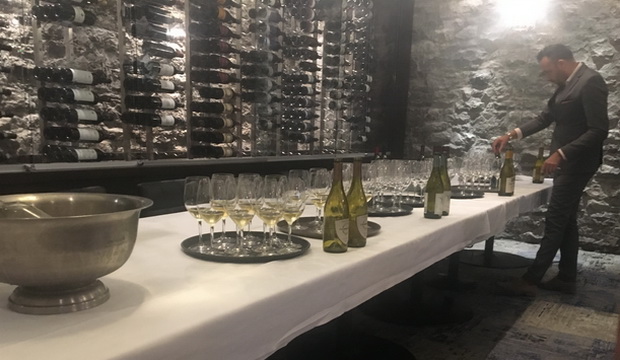
Juan is also the first in the world to create a “crowd-sourced wine” where he receives live video feed from subscribers to their web site to aid in the creation of a particular wine.
Everything from time of harvest to vinification methods are received by a voting system and followed based on the majority of votes for each step in the process.
It is a genius way to involve wine lovers from all over to contribute to the winemaking practice. Read more about this crowd-sourced cabernet here.
In 2015, Wine Spectator rated 27,000 wines from around the world. Only 1/3 of those scored higher than 90 points. Fifty-one percent of those that scored over 90 came from Washington State.
There are currently over 900 wineries in Washington State. Something noteworthy about the grapes grown in Washington State is that they are from 100% vinifera wood stalk with zero phylloxera and are disease resistant. All of this combined, enables the wines to be a true expression of the region.
Ste Michelle Wine Estates consists of six wineries better known as the “string of pearls”. Columbia Crest first planted its vines in 1978. In the next ten to fifteen years, there will be a focus on further dissecting the areas within Washington State to create even more micro-climates.
During the summer months, Columbia Valley receives an average of seventeen hours of sunlight per day. This extra sun exposure contributes to an increase in photosynthesis. Hot days (35 degrees Celsius) with cooler nights (18 degrees Celsius), create ideal growing conditions for grapes. The daytime temperature drops to 20 degrees Celsius in October, which is perfect for the ripening of red varietals.
Water use is heavily regulated through drip irrigation, and canopy management is considered standard practice to allow as much or little sun exposure to the berries, depending on the style of wine desired.
The wines presented during Juan’s visit include Columbia Crest Chardonnay, Cabernet Sauvignon and Merlot; H3 Chardonnay, Cabernet Sauvignon, Merlot and H3 Red Blend; Chateau Ste Michelle Chardonnay, Merlot, Cabernet Sauvignon and Syrah; and finally 14 Hands Chardonnay, Cabernet Sauvignon and Merlot.
Each brand has its own unique viticultural and vinification practice, which is instrumental in the distinctiveness of each wine style.
Columbia Crest for example, creates wines of fuller body and boldness. Its Chardonnay is 100% barrel fermented with battonnage method used whereby the lees are stirred on a weekly bases.
H3 is comprised of lower yields with a focus on canopy management. The tanks used differ in size from the other wines, contributing to wines with more elegance, more depth and layers with dusty tannins. The H3 Cabernet Sauvignon is Washington State’s best seller in Canada.
14 Hands presents a lighter style Chardonnay with reds that are more opulent and approachable with softer tannins. The grapes grown for this brand are found at the bottom of the foothills.
Chateau Ste Michelle is more traditional in style and, ‘French in spirit’. These wines express more minerality, more finesse and refinement.
The wines of Ste Michelle are of great value, with prices ranging from $17.95 to $20.95 per bottle. The elegant, polished style of wines found in Washington State are certainly worth adding to your collection of wines to enjoy for any occasion.
Sean O’Regan
Director, National Capital Sommelier Guild
It was a great pleasure being able to attend the Ste Michelle Wine Estates’ winemakers lunch tasting at the Sidedoor Kitchen & Bar in Ottawa’s Byward Market. The tasting provided a great introduction to Washington state wines from Columbia Crest and Chateau Ste Michelle lead by Juan Munoz Oca, the head winemaker at Columbia Crest Winery.
Being familiar with the great values that can come from Washington state, I actively seek out opportunities to buy and taste offerings sometimes not available in our market. Sitting beside Juan was a perfect chance to ask what it is that makes this region standout for quality and value.
One of the reasons that Washington wines are such a great value is that the land is about 1/5th the price of that from neighboring California, which lowers overhead for new vineyards. The quality of fruit and the end product depend on many factors which go beyond a blog post, but a few points of interest follow.
The climate east of the Cascade Mountain ranges is categorized as Continental Semi-Desert, mainly due to the Rain Shadow Effect where the mountains stop the clouds from bringing moisture over.
This arid climate combined with cold winters and sandy soils means that there is little fungal and pest issues which translates into less need for herbicides and pesticides. In fact, eastern Washington is able to use its own rootstock instead of needing to graft the vines to ones that are phylloxera (an aphid) resistant which some believe allows the purity of fruit flavor to be maintained.
The other item of interest was seeing how the vines can be stylized by using drip irrigation for canopy development due to the dry soil conditions.
The amount of water given to the vines will alter how much foliage there is in the canopy, allowing customization of the amount of sunlight the grapes will receive. Experimentation can yield results deemed best for particular grape varieties.
If you haven’t been exposed to the wines of Washington State, gather some friends and try a blind tasting comparing them with similar priced California wines, and be amazed at the quality and value being offered from this region.
Gregory Hughes
Sommelier & Blogger
I thought this particular tasting excellent. I took a lot more from this than from a lot of other tastings. It was informative and the facts were related back to the wine well.
Juan Munos Oca is head winemaker for the Patterson Wine Group, and is Spanish, but was raised in Argentina. Colleagues suggested he think about winemaking in Washington. This took him aback at first, but with further exploration he discovered winemaking in the Pacific Northwest fell in line with his research interests.
His thesis was on deficit irrigation in viticulture. Making the vine put all of the effort in the grape cluster – an important fact for understanding Washington, no doubt. His line of questioning sought to answer whether vines stressed this way are healthy, or not.
The west side of Washington is really wet. Four hours east of the Cascade Mountains, it is dry – one of the driest areas of the continental US. The scant rain they do have accumulates in the winter. They use river irrigation, but it is strictly regulated.
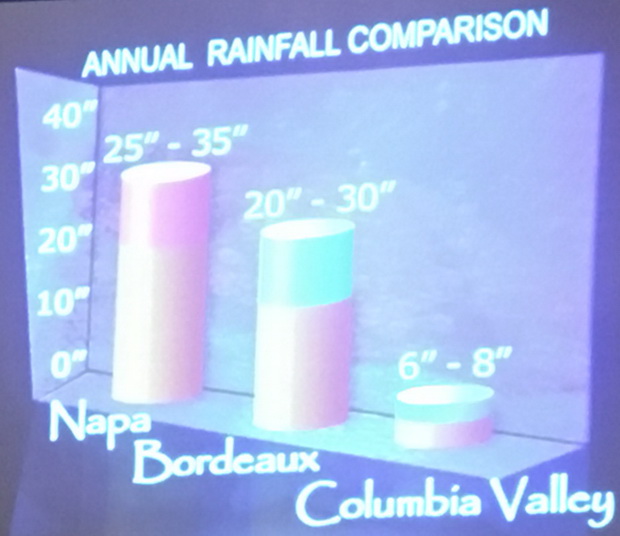
The soil is so loose (alluvial sediment from flooding events from the nearby river system), they can control the moisture, since anything the vine doesn’t absorb immediately is lost into the soil. They can maintain, control, and deprive the wines at the key times to achieve concentrated flavour.
Natalie asked whether they’ve experienced any change in overall climate due to global climate change. Juan responded that they expect to see greater extremes, but similar mean temperatures. They aren’t worried about it getting colder or warmer.
They are a small enough winery to be able to direct the manipulation of the canopy to introduce an herbal element into the wine. (Chateau St. Michelle Cab Sauv 2014 – capsicum thrust mid-palate). That being said, this company produces 60% of the wine in the whole state.
Washington is generally phylloxera free! Sandy soil and harsh winters. They use 100% vinifera rootstock, with few complications.
When asked if they are responding to the market’s demand for a more nuanced elevage or less toasty barrel for chardonnay, Juan explained that they try not to change styles too quickly. They see themselves as the stalwart big brother of Washington State wines and feel they have to respect their client’s tastes and what they expect. They cannot change their toast or oak regimen too quickly.
Two side notes: I wished they had served Chateau St Michelle’s Riesling, considering they’re the single largest volume producer of Riesling in the world (a million cases). If a winery produces a lot, usually it’s because that varietal excels or the winemaker has a predilection for it.
SideDoor coped well with our devouring their stemware. I wonder if they had to serve someone wine in a flowerpot in the restaurant proper? ;)
Mary Anne Van Gaal
Wine Tasting Club Leader
I have to admit I was not that in tune with the wine industry in Washington State. After Tuesday’s tasting with Columbia Crest Winery, I almost feel like I have been there!
The head winemaker, Juan Munoz Oca was so passionate and knowledgeable about the winemaking potential of the geographical area of the Colombia Valley.
I love that they are able to produce quality, award winning wines at great prices because of the lower land prices and that they feel that they are the underdog and have something to prove.
I found the whole concept of stressing the vines to see what kind of wine they can produce fascinating, and that the uniqueness of the climate of the Columbia Valley allows them to do this. This allows such potential to create unique wines not found anywhere else in the world.
Doug McMillan
Accredited Sommelier & Blogger
The lunch tasting for the three brands from Washington was quite the experience. As always, the room and food at SideDoor Restaurant were fantastic.
The selection of wines tasted was a solid cross section of some of the value wines from the Eastern Washington winemakers. The Chardonnays (all of them) were quite impressive; it’s rare for me to enjoy oaked Chardonnay so much, but the acidity and overall balance made them quite enjoyable.
The reds were great as well, and I’m very much looking forward to more of them becoming available in the LCBO.
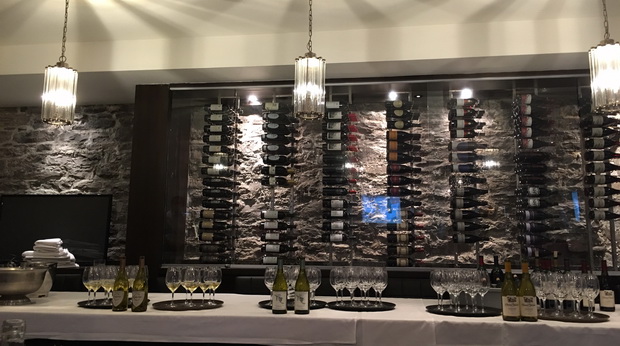
The technical aspect of the tasting was excellent. Learning about the degree of control winemakers get in the arid land of Washington, due to the minimal rainfall, went a long way towards explaining why the wines are so consistently good. Contrasting the price of land compared to Napa explains a big part of why the wines are such a great value.
The degree of water control used to stress the vines to extract their maximum potential is quite impressive. I’d never really considered drip watering one side of the root and letting the other side feel like it’s in drought. The innovative techniques being explored are always of interest as that’s the way wines are made better. Some of the techniques being tried in Washington hold promise and I think we’ll be seeing a lot more really good wines coming our way from them.
Lori Kilmartin
Sommelier & Blogger
I can’t think of a better way to spend a Tuesday afternoon than drinking a line-up of outstanding Washington State wines.
The wine came from four different vineyards; H3 and Grand Estates from Columbia Crest, Chateau St. Michelle CV (Columbia Valley) and the 14 Hands Winery.
Better yet – is when the tasting is organized by the fabulous Natalie MacLean with a group of your peers and led by the winemaker himself, from Columbia Crest – Juan Muños Oca.
Reviews of the wines can be found on this site so I won’t go into detail here, other than to say we had the opportunity to taste and compare a variety of wines made with Chardonnay, Merlot, Cabernet Sauvignon, and Syrah.
All kinds of interesting facts about winemaking in Washington were covered. The fact that Washington sees a lot of rain is true – but only in certain parts – and not east of the Cascade Mountains where the vineyards are located. They only get approximately 6”- 8” of rain a year and see up to 17 hours of sunshine during the growing season.
Melanie Aubert
Sommelier & Blogger
This was my first winemaker tasting event and I was absolutely blown away. It was so fantastic to be able to talk to not only the winemaker, the person who pours their heart and soul into making delicious wines, but also some key people from Château Ste Michele and Dandurand Wines who help that same wine reach our glasses.
Juan Muñoz Oca was very personable as well as incredibly knowledgeable, and I was grateful to know enough about vinification and winemaking techniques to be able to understand all the intricacies of his research on winemaking in the Columbia Valley. This guy knows his stuff, and his wines show it.
Being able to taste the chardonnays from the three different wineries, provided an excellent example of the different styles of the winemakers, from big and bold to subtle and refined.
As for the reds, my personal favourites of the day were the Columbia Crest cabernet sauvignon and the H3 merlot. I will also be running out to get a few bottles of the Château Ste Michelle CV cabernet sauvignon, which was part of the latest Vintages release.
I was also very impressed with the food served by Sidedoor. It was a delicious accompaniment to these fabulous Washington wines.
Camelia Bucar
Certified Sommelier & Blogger
I so enjoyed this tasting! First, meeting the winemaker (Juan) and having him explaining the processes he uses during the creation of his wines was impressive.
I felt that I was in one of my classes of vinification. You can definitely see his passion for his wine (and for wine in general) but as well for the love of the region of Washington State.
I enjoyed his explanation of the climate, soil and temperature of the Washington State region. I can now explain it and understand why the wine taste a certain way.
While the winemaker was talking during his presentation, I was thinking of writing to Netflix to have a television show with the most interesting winemakers of this world, like Chief’s Table.
I felt that most of his red wine was more of an old world style than new world. However, the white wine felt like new world wine.
I like all the brands that we tasted and the order of it. It didn’t feel like too much. Obviously, I like the one white (Columbia Crest chardonnay) more than the others; and one red (Columbia Crest Cabernet Sauvignon) more than the others.
The ambiance of the restaurant (amazing private room I must say) and the food selection was delicious (loved the snack food).
Rebecca Meïr-Liebman
Sommelier of Chef & Somm Bespoke Dining
Introducing, Miss U.S.A.!
I cannot tell a lie – I am not a big fan of American wines. I know I’m swimming upstream on this, because here in Toronto, American wines are very popular.
In my eight years as a private and restaurant sommelier, I’ve sold more bottles from Oregon and Napa than any other wine from any other country! And still I resisted. (True confession: the sommelier who mentored me threatened to take the wine list from me, if I didn’t start attending more New World wine tastings.)
I have since mended my wicked ways; my mind is now wide open to New World, and in particular American wines, and that was how I approached a recent tasting of Columbia Crest wines held at the iYellow wine cave in Toronto.
My main issue with American wines is, often I find them to be more about marketing, lifestyle, and brand names – sometimes the pricing and quality just don’t add up for me – and less about the flavours in the bottle. But, sipping a lightly chilled Columbia Crest Chardonnay, I tasted something real there, something good and of good value for money. And when the wine is good, I can’t wait to learn more from the winemaker.
A third-generation winemaker, Juan Muñoz-Oca is passionate about what he does. Winemaking and grape-growing is second nature to him; it’s a part of who he is. He’s known since childhood, that winemaking was what he would devote his life to. His family immigrated to Argentina from Spain and Italy, and it was in Mendoza where an eight-year-old Juan was sent out to the vineyard to pick grapes.
In 2001 Mr. Muñoz-Oca met with Dr. Robert Wample, then a top viticulturist at Washington State University, who convinced him to move to Washington to intern at Ste. Michelle Wine Estates. In 2003 Mr. Muñoz-Oca began making wines at Columbia Crest.
Superstars Napa and Sonoma get the lion’s share of attention from the wine world, while Washington doesn’t get nearly enough. Washington’s West Coast climate varies so much – it’s a geography rich with micro-climates: from mountain to coastline – affording the winemaker the potential to grow many different grape varieties.
Washington State has 13 official appellations, or AVAs (American Viticultural Areas). Columbia Valley is a ‘macro’ appellation which is home to several smaller AVAs.
“The future of Washington is bright,” says Mr. Munoz-Oca with a contagious enthusiasm, “all we need to do is to find the unique micro climates, the right grape varieties for the right places. It’s a very new region.” And for the region he’s working in, this winemaker’s favourite grape is Cabernet Sauvignon.
Since I’ve come around to American wines, I’ve tasted many Cabernet Sauvignons from the US and the Columbia Crest Grand Estates Cabernet Sauvignon from Columbia Valley is one of the better Cabernets I’ve tasted at its (very reasonable) price point. With elegant tannins, it could stand about 10 years of bottle aging. But right now, it’s all black currants blended with black pepper and cedar notes, finishing with cinnamon, dried fruit and savoury herbs.
Of the night, my favourite was Columbia Crest’s Grand Estate Chardonnay from Columbia Valley. Its lovely creamy texture combines with that cool climate style of fresh acidity. On the nose, I enjoyed apple and melon notes with butterscotch, and a satisfying richness.
Modern winemakers travel a lot. Moving from country to country, from one wine making region to another, and it’s because of this marvelous cross-pollination, wine-lovers are being treated to more and more Old World-style wines produced in New World regions.
The beauty of the wine world is that it never stops evolving. I’ve learned to do the same, and to keep an open mind, especially to those wines and regions I’m not naturally drawn to. And it’s with the zeal of a recent convert that I recommend we all do the same!
Manon Maerten
WSET 3 & Sommelier
Juan Munoz Oca, and the wines that he produces, are fine and elegant. You can definitely say that he has expertise and legacy in wine: being born in Spain, raised in Argentina in a winemaking family, with studies and experience in winemaking and viticulture on four different continents: Wow!
Juan is so passionate, when he talks about its terroir, you can easily understand why he went there and never left and the only thing you want to do is take a ticket to Seattle, cross the Cascade Mountains and enjoy wine in one of the driest region in the US. You read well!
Indeed, this tasting with Juan was an occasion to learn amazing things about Columbia Valley. It’s a very sunny region in summer and very cold in winter. Juan explained to us that vines are suffering in this dry climate and they need to find water and we know that a vine that suffers will thrive its focus on finding nutrients/water deep in the soil to produce good fruits. So here is the explanation behind the fabulous concentrated fruitiness of the Columbia Crest wines.
What I really appreciated is how affordable are the wines, having this level of quality and pleasure to sip is quite amazing for wines under $20 at the LCBO.
The Chardonnay, oaked but still very fresh, floral and fruity. The mouth is well balanced by a persistent acidity.
The Merlot is round and balanced with chocolate notes and wild berries.
The Cabernet Sauvignon was my favorite. Sometimes we expect a Sauvignon to be harsh but this one is extremely velvety, balanced by a medium acidity. Very concentrated fruits: blackberries and the oak is present with aromas of vanilla.
Juan Muñoz Oca is the head winemaker at Columbia Crest Winery in Paterson, Washington. Columbia Crest is recognized as the leading producer of acclaimed, high-quality wines from Washington state.
As winemaker, Muñoz Oca is responsible for producing the winery’s portfolio of Reserve, H3, and Grand Estates wines. He joined Columbia Crest in 2003 and was named winemaker in 2011. Prior to 2011, he was dedicated to the winery’s red wine program. It was during this time that the 2005 Reserve Cabernet Sauvignon was produced, becoming the first Washington wine to be named ‘Wine of the Year’ by Wine Spectator in 2009.
Raised in Mendoza, Argentina, Muñoz Oca came under the tutelage of his grandfather, cellar master at Bodegas Toso winery, at a young age. The older man instilled in him a love and respect for wine, as well as for his family’s Spanish culture, that was to become the root of a lifelong passion for winemaking. He picked his first grapes at the age of eight, later took an after-school job in a wine cellar, and spent his vacations helping his grandfather with harvest.
“I’ve been involved with grapes since I was a little boy – my grandfather was in the industry and his father was in the industry – it’s all I’ve known,” says Muñoz Oca. “Winemaking has been in my family, it’s in my blood, it’s what I do, and it’s who I am.”
During his college years, Muñoz Oca gained more wine industry experience during stints at various wineries in Argentina.
After graduating with honors from Argentina’s National University of Cuyo with dual degrees in agricultural engineering and winemaking, he studied viticulture in Ribera del Duero, Spain and joined the winemaking team at Terrazas de los Andes, an Argentine premium winery owned by Chandon.
In 2001, Muñoz Oca met the legendary Dr. Robert Wample, then a top viticulturalist at Washington State University. Wample convinced him to further his winemaking career in Washington.
In the summer of 2001, he began interning with the viticulture team at Ste. Michelle Wine Estates, and in 2003 began working at Columbia Crest. With time out for stints at Bleasdale Vineyards in Australia and Bordeaux’s Chateau Puy Guilhem, he’s been at Columbia Crest ever since.
Although his winemaking experience stretches across the globe, it is his time at Columbia Crest that has been the most meaningful. “Washington state is a very special place for winemaking,” says Muñoz Oca.
“At Columbia Crest, our team is committed to crafting spectacular wines vintage after vintage. We have high quality fruit, ideal growing conditions, and the best viticultural practices. I fell in love with the wine and the people, and that’s why I’ve been here since.”
Columbia Crest Grand Estates Chardonnay 2013
Columbia Crest Grand Estates Chardonnay 2014
Columbia Crest Winery Grand Estates Cabernet Sauvignon 2013
Columbia Crest Winery Grand Estates Merlot 2013
Columbia Crest Winery Grand Estates Merlot 2015
Columbia Crest H3 Chardonnay 2013
Columbia Crest Winery H3 Cabernet Sauvignon 2014
Columbia Crest Winery H3 Les Chevaux 2012
Chateau Ste. Michelle Merlot 2013
Chateau Ste. Michelle Chardonnay 2014
Chateau Ste. Michelle Cabernet Sauvignon 2013
Chateau Ste. Michelle Syrah 2013
14 Hands Cabernet Sauvignon 2014
Chateau Ste. Michelle Cabernet Sauvignon 2014



